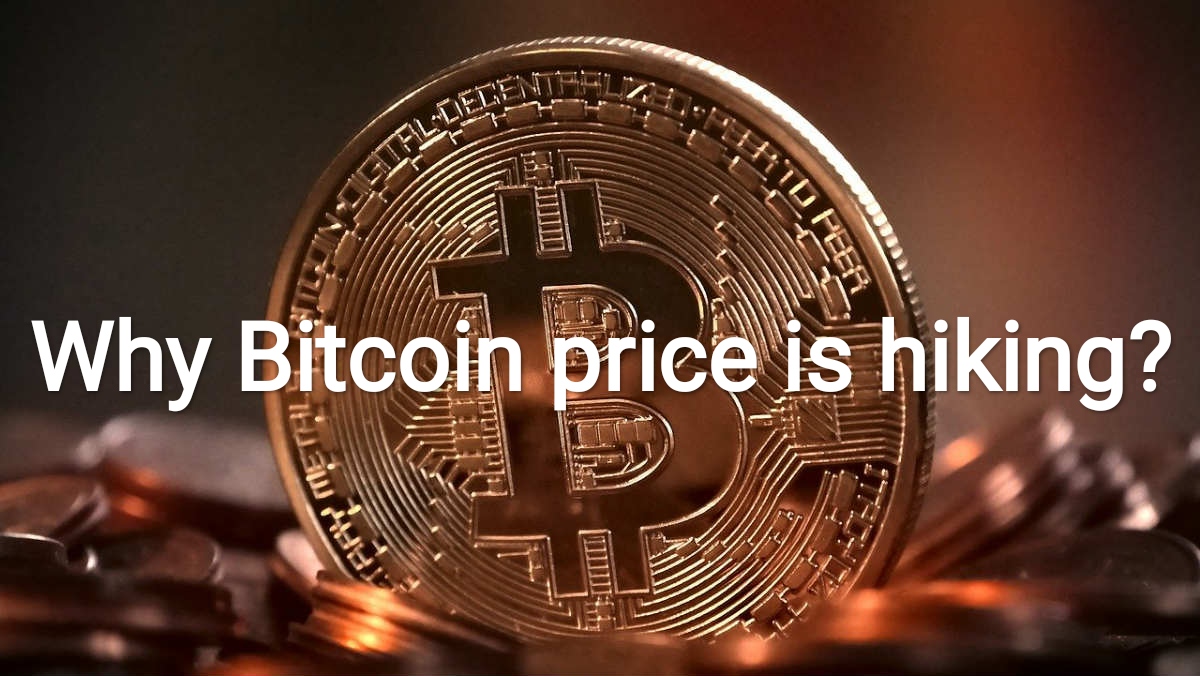A variety of factors play a role in deciding the price of a Cryptocurrency, no one expected that Bitcoin would become such a big thing in this era. Researchers say that the price of Bitcoin will keep increasing for a person with a long-term perspective.
Why Is Bitcoin Price Going Up?
We'll know the reasons behind the rises as well as the falls of Bitcoin prices.
When do Bitcoin prices rise up?
1. Media Hype
Media is a powerful tool that can change the way people think about the world. People believe in what others say.
When Media hypes a particular topic, the topic is then struck in the mind of a person.
The same person tells the story about the topic to another person and the cycle continues till another Media started saying the downside of the same topic.
Think about the time in 2017, when the price of Bitcoin was close to $20k and the headlines were made on Bitcoin on daily basis, in turn, it pulled out a lot of attention from the public.
2. Growing lack of confidence in real currencies.
A lot of people are losing their trust in fiat currencies and the reason for this is the regulation of the central authorities.
They fear if the authorities started printing out a lot of notes, which can result in hyperinflation, where the currency loses its value and become weak in front of other fiat currencies.
If we look at history, Fiat currencies have failed over and over again.
Even assets like gold have survived. And if people lose all the trust in the nation's currency, the currency will survive no more.
On the other hand, Bitcoin is not controlled by central or external authorities which makes it pretty safe for people to trust Bitcoin.
It has a limited supply as well Bitcoin halves every four years, which increases its value. As the supply decreases, demand increases, therefore, the value increases as it experiences a bull run.
3. HODLing (Holding)
Some business tycoons hold a large proportion of Bitcoin which significantly contributes to the price or value due to the scarcity.
When a large proportion of Bitcoin is HODLed, the supply decreases and demand increases, due to which the price or value increases.
The HODLer does get an equal return in a long-term aim. That's the reason why we see some popular tycoons buying a large proportion of shares.
4. Increasing endorsement or adoption of Bitcoin
Some of the major retailers have adopted Bitcoin as a means for the transaction.
Some examples of companies that use Bitcoin as a medium to sell their products are Microsoft, Home Depot, and AT & T. Tesla is planning to implement the use of Bitcoin.
As more and more retailers use Bitcoin, the demand for Bitcoin increases.
But still, many companies are lacking this as they fear the volatility of Bitcoin, as well as it is too new.
5. Scarcity in supply
As scarcity increases, demand increases at an equal pace. Due to an increase in demand, the price also rises. The limited supply of Bitcoin is 21 million. As the amount is halved after every four years, the new Bitcoins arriving in the market are nullified.
To understand the context in a simpler way, in 2009, the reward for Bitcoin mining was 50 BTC, and after the first halving in 2012, it was reduced to 25 BTC, right now the reward for Bitcoin mining is 6.25 BTC since 2020.
So what's happening here? The supply is reducing by half and the value is increasing. It also reduced inflation by half.
6. High volatility
High volatility means high fluctuation in the price. The price of Bitcoin changes a lot. This gives a lot of opportunities to traders. You can not make any money if the volatility is too low to null. There must be changes in the price to make a profit or loss out of it.
Bitcoin is a very volatile cryptocurrency that offers a lot of potential to traders.
Experienced traders would most likely put their money in Bitcoin and this lowers the supply as well as increases the demand which results in price hiking. Volatility is inversely proportional to liquidity.
